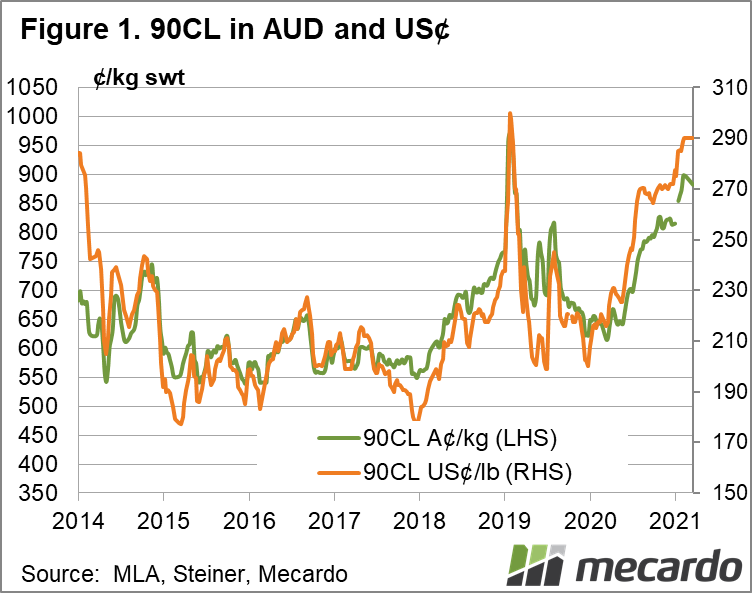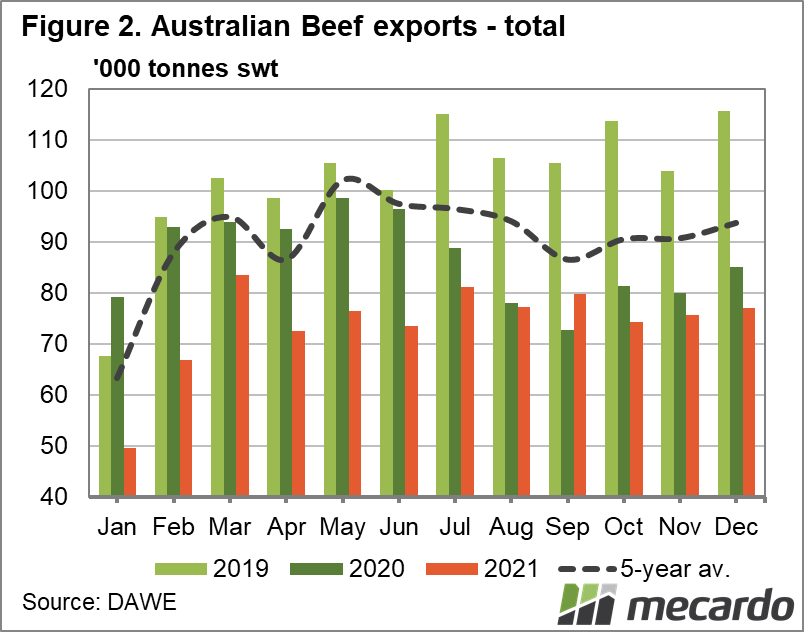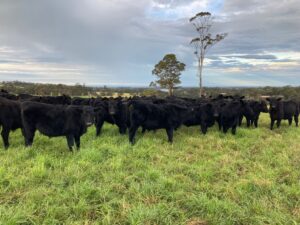Global beef availability is looking tight as we head into 2022, and this could continue to support Australia’s record high cattle returns. The US herd is in a liquidation phase, which will start to slow their beef supply, at the same time as its export demand is forecast to grow. Trade distributions in South America - and now Canada - due to domestic challenges and possible BSE (Mad Cow) outbreaks are also still impacting the market in 2022, and of course Covid-19 caused processing slowdowns and freight distributions remain part of the equation.
Total Australian beef exports finished last year 15% below 2020 levels, and at their lowest volume since 2003. For only the second time since the turn of the century, beef exports fell below 900,000 tonnes shipped weight, to 887,683 tonnes. While we only have beef export value data for 2021 up to October, it’s worth noting that for the first 10 months of last year, that figure was 9% lower than the same period the previous year.
Beef exports to the US finished the year 31% lower than 2020, and 37% below the five-year average. This saw the US market share of Australian beef exports fall to 16.5%, down from 20.3% last year, and from a peak of 31.4% in 2015.
The hamburger and BBQ season in the US is well and truly over, which usually means lower lean beef prices, but this hasn’t been the case for the past three months, with returns holding steady, the Steiner Consulting Group reported. The 90CL price is currently at 898¢/kg, up 45% from the same time last year and at its highest level since December 2019.
Australian supply – or a lack thereof – has played a role in this, with US imports of Aussie beef down 45% year-on-year for the November/December period. Covid-19 impacted processing plants which have had to slow down due to limited workforce availability, have seen a reduction in slaughter for 2022 so far in both countries, with US cattle slaughter 4.8% lower for the first full week of the month, and Australian slaughter down a massive 42% for the same week.
What does it mean?
The US has moved from being a net importer to a net exporter of beef, according to Rabobank, thanks largely to the growth of their Chinese market. All indicators show the US to China beef trade will grow further in 2022, due to limited Australian production and Brazil’s loss of market access. Those factors, strong domestic US demand and declining US production will set the pace of global beef trade in 2022 – and so far it’s looking like a good one.
Have any questions or comments?
Key Points
- Australian beef exports finish 2021 down 15% year-on-year, at lowest level since 2003.
- US 90CL beef export price being bolstered by low supply and strong demand, now up 45% year-on-year
- Global beef supply forecast to tighten into 2022, supporting strong domestic returns.
Click on figure to expand
Click on figure to expand
Data sources: MLA, ABS, DAWE














